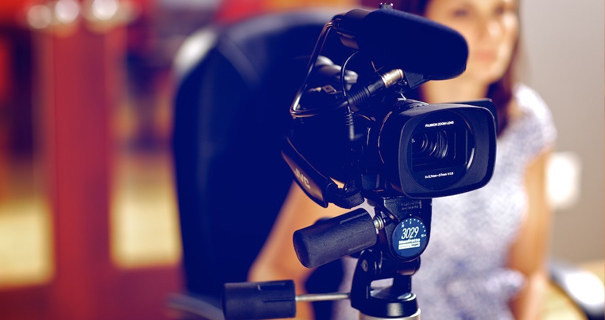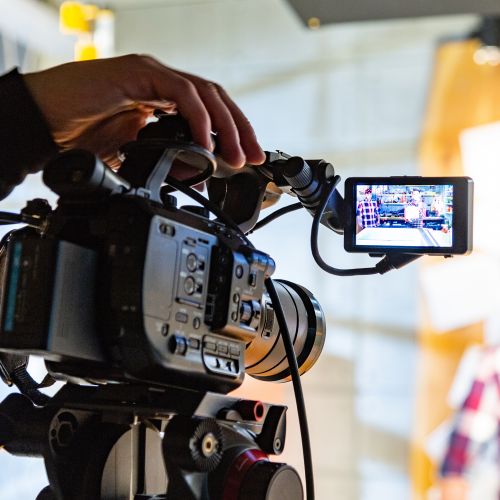Legal Videography: A Key Asset for Effective Trial Presentations
Legal Videography: A Key Asset for Effective Trial Presentations
Blog Article
Why Legal Videography Is Important for Accurate Court Recordings
The function of legal videography in court room setups can not be overemphasized, as it offers as an essential device for maintaining the stability of court records. By recording both verbal and non-verbal communication, it enhances the clarity of witness testaments and shows the nuances of court room communications. This detailed documentation not just aids in decreasing potential misunderstandings but additionally sustains appellate evaluations, thus reinforcing the judicial procedure. The effects of incorporating lawful videography right into standard court room methods raise essential questions concerning its wider impact on the lawful system. What might these effects entail?
Relevance of Visual Evidence
In the realm of lawful proceedings, the relevance of aesthetic proof can not be overemphasized. Aesthetic evidence works as a powerful device in developing realities, proving testaments, and enhancing the overall clarity of an instance. This kind of proof, which includes pictures, video clips, and diagrams, can provide a tangible context that spoken descriptions typically do not have, thus supplying courts and judges a more clear understanding of the conditions bordering an instance.
Moreover, visual proof help in the retention of details. Human cognition is naturally aesthetic, and individuals are more probable to bear in mind and understand info provided in a visual format. In the courtroom, this can be essential, as compelling visual proof can guide viewpoints and strengthen the narrative presented by lawful reps.
In addition, the usage of visual evidence can minimize misconceptions and obscurities that commonly develop from verbal exchanges. By offering a straight depiction of occasions, visual evidence aids to remove subjective interpretations and fosters a more unbiased assessment of the truths. The assimilation of aesthetic evidence into lawful procedures not only reinforces the stability of the judicial procedure however also boosts the probability of achieving a simply outcome.
Capturing Non-Verbal Signs
Using advanced videography strategies can substantially enhance the capture of non-verbal signs during lawful proceedings. Non-verbal interaction, including faces, body language, and eye contact, plays a crucial function in sharing emotions and purposes that may not be clearly stated in spoken testimony. legal videography. Lawful videography employs high-def video cameras and strategic angles to guarantee that these subtle hints are videotaped with clearness and accuracy
The capacity to examine non-verbal behavior can offer beneficial context to statements made throughout court sessions. A witness's unwillingness or self-confidence can be analyzed through their posture or gestures, potentially affecting the court's assumption of credibility. Furthermore, the use of close-up shots can aid concentrate on an audio speaker's expressions, permitting an extra nuanced understanding of the testament.
Furthermore, incorporating multiple electronic camera angles can develop a detailed view of communications, highlighting dynamics in between celebrations entailed. This diverse strategy legal videography not just improves the precision of the court record but also aids in maintaining the honesty of the judicial procedure - legal videography. Eventually, catching non-verbal cues through legal videography cultivates a richer, extra total representation of courtroom proceedings

Enhancing Testimony Integrity
The reliability of testament can be substantially reinforced via using high-quality lawful videography. Video recordings work browse around these guys as an objective medium that records not only the talked words of witnesses but additionally the nuances of their distribution, including tone, pacing, and psychological expressiveness. This multifaceted paperwork provides a clearer understanding of the witness's credibility and intents, which can be crucial in legal process.
Furthermore, lawful videography minimizes the capacity for false impressions that may emerge from written records alone. When jurors can observe a witness's disposition and body movement combined with their testament, they are much better geared up to analyze the authenticity and dependability of the proof presented. This visual context can enhance the testimonial story, making it much more compelling and credible.
Furthermore, the visibility of a video clip recording can discourage possible disparities in testament. Witnesses may be a lot more cautious in their statements when they understand they are being recorded, causing more exact and honest accounts. On the whole, high-quality legal videography improves the stability of statement, making certain that the court has accessibility content to a full and truthful representation of the truths as communicated by the witnesses.
Supporting Appeals and Reviews
Legal videography plays an important duty in sustaining charms and evaluations by supplying a thorough aesthetic document of court procedures. This visual documentation captures not only the talked words of witnesses and lawyers however likewise the nuances of body language, tone of voice, and courtroom characteristics. Such components can be essential in comprehending the context of statements and disagreements presented.
In the appellate procedure, where the focus is on mistakes of regulation and procedural fairness, a video clip document can act as an important tool for appellate courts. It makes it possible for courts to evaluate the original trial context, guaranteeing that decisions are based upon a total understanding of the proceedings. The capacity to visually assess the demeanor of witnesses or the communications between parties can disclose insights that created transcripts may ignore.

Furthermore, lawful videography can help in clarifying uncertainties in testimonies or step-by-step judgments, thus reinforcing the basis for a charm. By offering a trustworthy, objective account of what taken place in court, lawful videography not only sustains the integrity of the legal procedure but likewise empowers all celebrations entailed to make informed choices concerning their cases.
Improving Court Procedures
Enhancing court room efficiency, legal videography enhances procedures by providing immediate access to visual documents of process. This modern technology allows judges, attorneys, and juries to review important testament and proof, ensuring that all parties have a clear understanding of the situation. By catching the subtleties of spoken and non-verbal interaction, videography improves the document, making it less complicated to grasp the context and weight of testimonies.

Furthermore, video recordings can promote remote involvement in hearings, enabling greater adaptability in scheduling and participation, which is specifically useful in complex instances involving numerous stakeholders.
Conclusion
In verdict, legal videography plays an essential function in making sure accurate court recordings by giving crucial visual evidence that captures both spoken and non-verbal communication. This practice improves the reliability of statements, supports appellate evaluations, and streamlines court processes. By promoting an extensive understanding of courtroom characteristics, legal videography eventually contributes to a lot more fair judicial results, enhancing the integrity of the legal system and facilitating notified decision-making.
Report this page